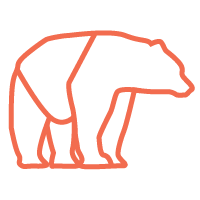Every second, a truck load of used textiles (plus leftover stock never even used) are thrown into landfill across the World. Vast amounts of textiles are also incinerated too – releasing poisonous chemicals into the atmosphere, which contribute toward not only global warming but breathing and lung difficulties for surrounding populations.
A truly responsible brand is one that doesn't just shine a glossy PR spotlight on the eco-credentials of the initial phase of life of an item, but rather is transparent and accountable for the whole supply chain. We’re not there yet, but we are constantly working with our suppliers to increase transparency, reduce our footprint and create a circular and more streamlined manufacturing system (more on this in our next blog).
Consumers will often know the type of material, but brands either strategically or naively, fail to understand or disclose:
- the manufacturing process and source of materials,
- the distribution process from location to the consumer,
- the wellbeing, safe conditions and fair financial treatment of its workers.
It’s important to understand, a product’s journey doesn't end once it leaves the warehouse - the next phase is about to begin: everyday use. But what of the crucial and often forgotten phase...life after use.
Less than 1% of clothing is recycled into new garments. The fashion industry generates 13 kilograms of waste for every person on the planet. To put that into perspective imagine a landfill the size of France filled with thrown away clothing and textiles.
Creating a quality product and measuring it’s true impact is vitally important, yes, but if an item is going to become part of our everyday life, be interacted with and form unexplainable bonds with us, brands need to consider the wider life of the product. Brands need to provide a platform for the care and support of an item, both during its prime and inevitable decline one day (some quicker than others). A responsible brand wants to be there to support and be part of an item’s wider life: to watch the item grow, gain experiences, scrapes and occasionally separations.
Using virgin* materials or natural fibres*, often means products can be rejuvenated and reincarnated, with new life breathed into it. The cost to the environment is down to the materials used and how easily (or not) they break down – alongside the energy needed for this.
It then comes down to the creativity of the brand, or collaborating brands, working towards a common goal of reducing their raw impact on the planet, often through a consumer upcycling and/or recycling scheme (like our BearReMade programme) and/or ‘offsetting’ the carbon emitted during each phase of life of an item (we do this through Ecologi). Brands can go one step further and invest their profits into the planet, by removing even more carbon out: creating a carbon negative item (and ideally brand), with all their wider practices considered into the equation.
Here at BearMade, we want to help you live responsibly for our delicate environment.
We don't like the word 'sustainable' when referring to a product. Producing goods - from plant-based or fossil fuel developed materials (most are a mixture of both now) - isn't ever a truly sustainable* practise. Everything we take out of the ground and form into a material: from the energy, pesticides or chemicals needed to do it, unbalances the systems of the natural world. That's why we try to limit the damage in all aspects of a product's life, and rejuvenate it through it’s afterlife.
This is known as circular production.
The Circular Economy describes the problem (and solution) perfectly: we need to go from the take-make-waste model to 'designing out waste'. Note: they do say we need to move to a more sustainable approach, not a fully sustainable solution. As we said: there isn't one.
* Definitions:
virgin materials: previously unused raw material (eg. unused copper)
natural fibres: derived from plants (eg. cotton) and animals (eg. wool)
sustainable: the degree to which a process or enterprise is able to be maintained or continued while avoiding the long-term depletion of natural resources
Written by Moj Taylor

